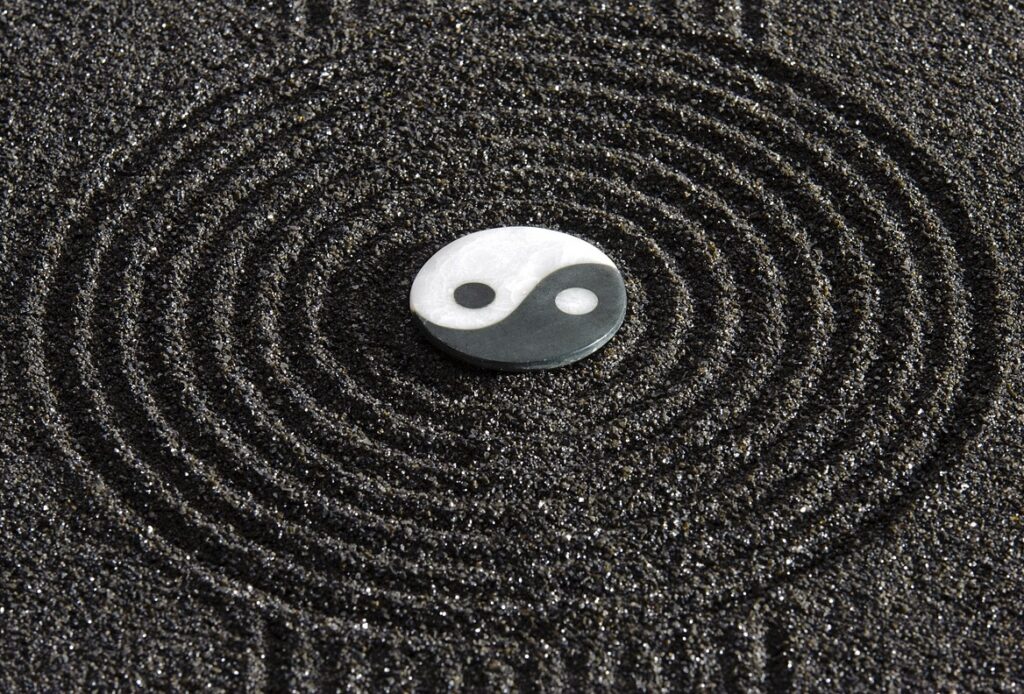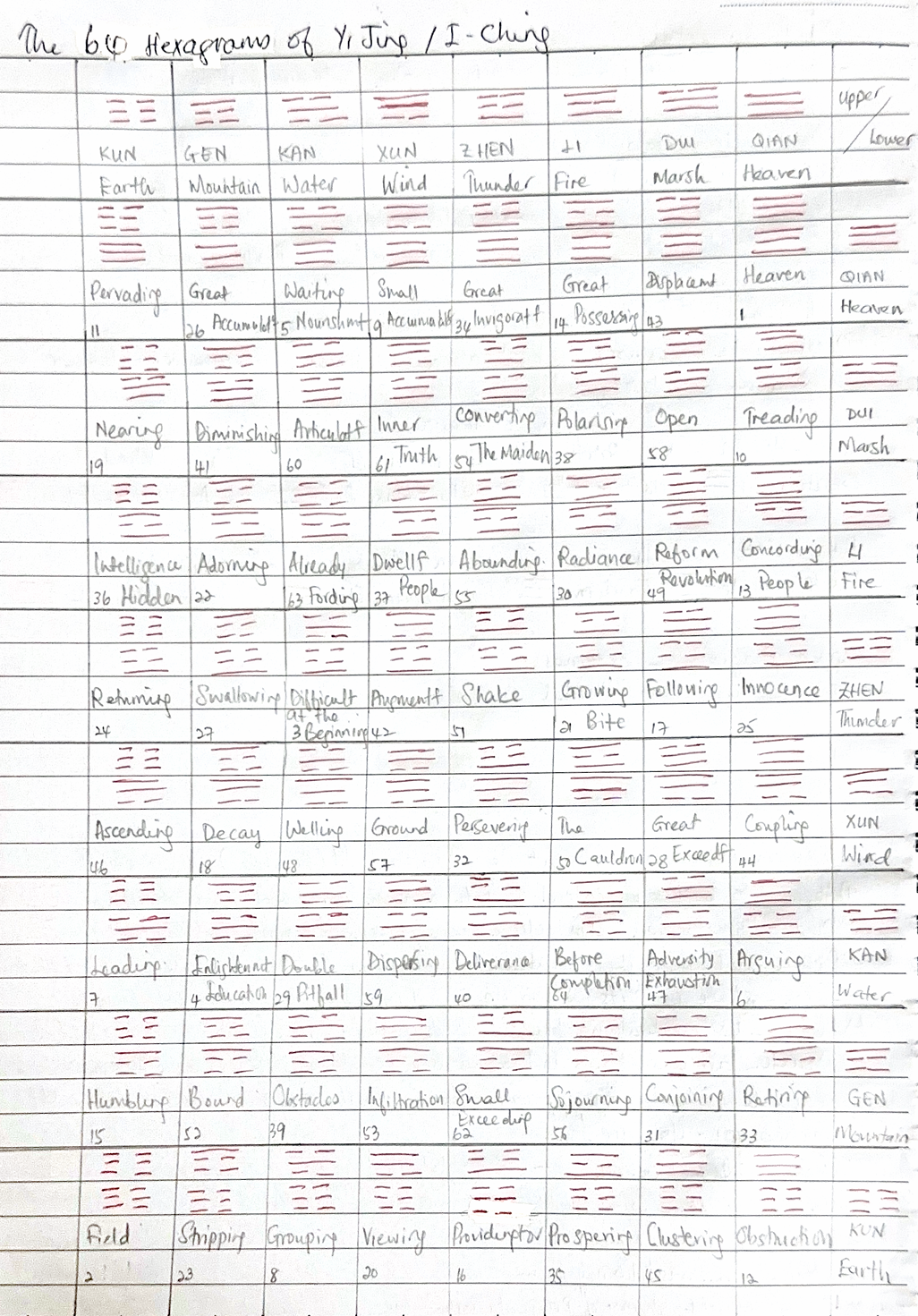The Yi Jing, also known as the Book of Changes, is one of the oldest and most profound systems of wisdom in the world. It teaches us about transformation, duality, and the natural cycles of life.
Yi (易) means change or transformation.
What is the I-Ching or Yi Jing?
The I-Ching (or Yi Jing) is an ancient Chinese classic that blends philosophy, cosmology, and divination. It dates back over 3,000 years, with roots in the early Zhou dynasty (c. 1046 BCE).
It began as a manual of oracle reading using lines (Yin and Yang) to reflect the flow of nature and human affairs. Over centuries, it evolved into a profound guide for decision-making and understanding life’s patterns.
The system is based on 64 hexagrams formed from combinations of 8 trigrams (Bagua), each symbolizing forces of nature and states of being.
At its heart, the I-Ching teaches that change is the only constant, and by observing the flow of change, we can align ourselves with universal wisdom.
☯️ Taiji: The Supreme Polarity
The black and white symbol you know as Yin-Yang comes from Taiji, which represents the unity of opposites:
- Yin (broken line: ━ ━): Receptive, still, intuitive, moon, feminine
- Yang (solid line: ━━━): Active, expansive, logical, sun, masculine
All changes arise from the dance between Yin and Yang.

The 8 Trigrams (Bagua)
Each trigram (3-line symbol) is made up of Yin and Yang lines, and represents a natural element and cosmic principle.
| Element | Symbol | Chinese Name | Number | Meaning |
| Heaven | ☰ | Qián | 1 | Creative force, divine will |
| Lake/Marsh | ☱ | Duì | 2 | Joy, openness, communication |
| Fire | ☲ | Lí | 3 | Illumination, ego, clarity |
| Thunder | ☳ | Zhèn | 4 | Movement, awakening, shock |
| Wind/Wood | ☴ | Xùn | 5 | Penetration, breath, flexibility |
| Water | ☵ | Kǎn | 6 | Depth, wisdom, danger, data |
| Mountain | ☶ | Gèn | 7 | Stillness, reflection, intellect |
| Earth | ☷ | Kūn | 8 | Receptivity, support, grounding |
Trigrams & Consciousness
The trigrams also reflect aspects of human consciousness:
| Concept | Trigram | Meaning |
| Intellect | Earth/Kun | Thoughtful, receptive, stable |
| Data | Water/Kan | Knowledge, stored experience |
| Ego | Fire/Li | Identity, personality, desire |
| Divine Intelligence | Heaven/Qian | Higher Self, cosmic order |
Putting It Together
- The Yi Jing uses 64 hexagrams (six-line figures), created by combining two trigrams.
- These combinations represent specific situations, energies, or life lessons.
- You can use Yi Jing for divination (like asking a question) or personal reflection.
Each hexagram tells a story of transformation and suggests how to navigate the cycles of life with wisdom and grace.
The Yi Jing is a powerful, spiritual compass. Start with learning the 8 trigrams, observe their energies in your daily life, and slowly build your understanding of the 64 hexagrams.

Let the wisdom of the Yi move through you, as gently as wind through bamboo.
Next Steps:
- Meditate with each trigram
- Journal how each element appears in your life
- Explore the hexagrams as poetic stories of change
Ready to change with the Change?